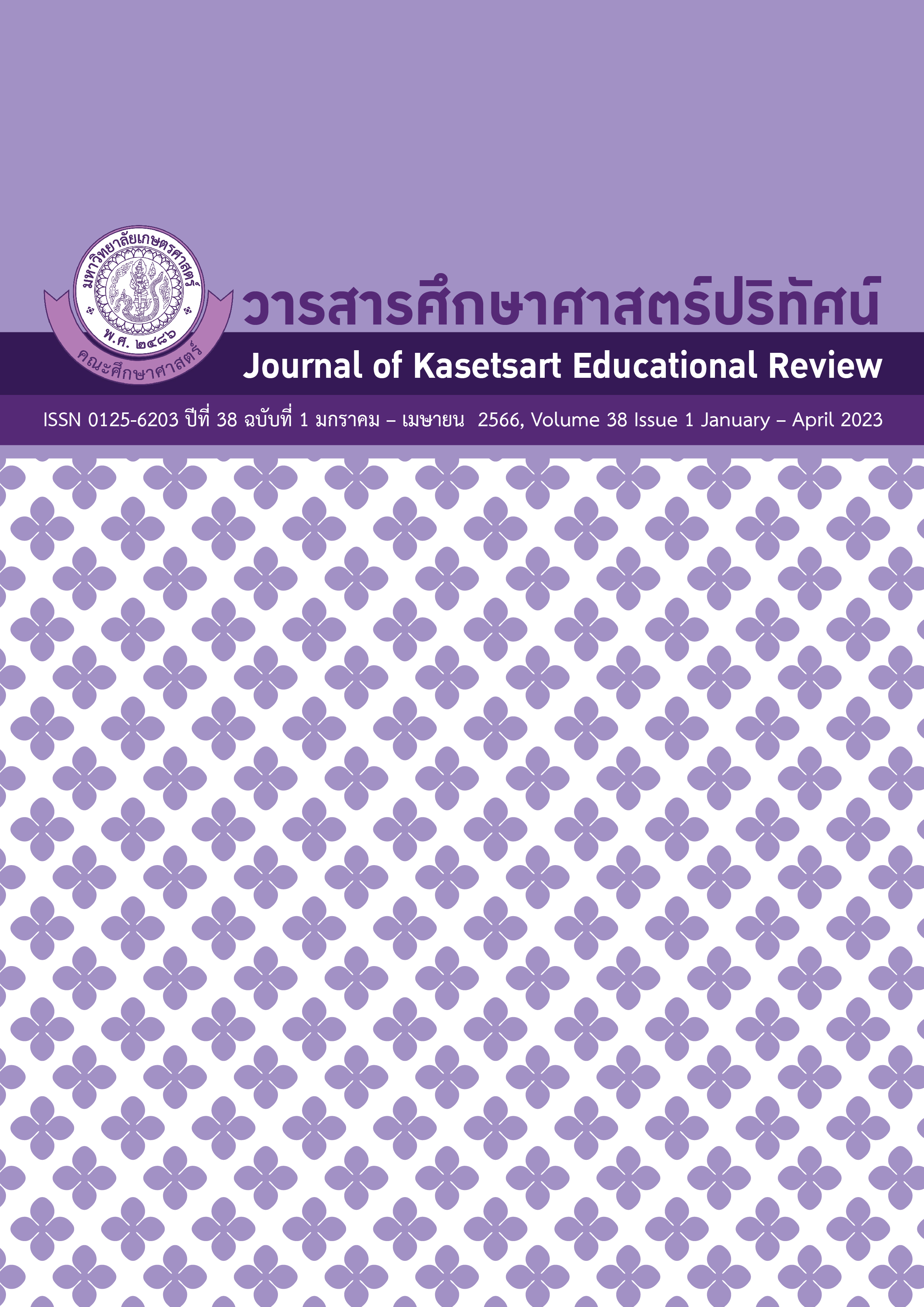การผลิตสื่อการเรียนการสอนภาษาอังกฤษเป็นภาษานานาชาติสำหรับนักเรียนไทย
คำสำคัญ:
ภาษาอังกฤษเป็นภาษานานาชาติ, การผลิตสื่อการศึกษา, ระบบนิเวศวิทยาในการศึกษาภาษาอังกฤษเพื่อการสื่อสารในศตวรรษที 21, สื่อมาตรฐานในการศึกษาภาษาอังกฤษ, สื่อในการสอนภาษาอังกฤษบทคัดย่อ
งานวิจัยเชิงพรรณนา มีวัตถุประสงค์เพื่อ 1) ศึกษาการจัดทำสื่อการเรียนการสอนภาษาอังกฤษเป็นภาษานานาชาติ 2) วิเคราะห์แนวทางและวิธีการของการพัฒนาสื่อรับสารและส่งสารในบริบทต่างๆรวมทั้งสื่อทักษะสัมพันธ์ และ 3) เสนอแนะแนวทางทฤษฏีและนวัตกรรมมาใช้ในการจัดทำสื่อการเรียนการสอนภาษาอังกฤษเป็นภาษานานาชาติ กลุ่มตัวอย่างในการวิจัยประกอบด้วยสื่อการเรียนการสอนภาษาอังกฤษเป็นภาษานานาชาติที่ผลิตในประเทศไทย จำนวน 10 ชุด สื่อการเรียนการสอนภาษาอังกฤษเป็นภาษานานาชาติที่ผลิตโดยสำนักพิมพ์ต่างประเทศที่มีมาตรฐานได้รับการยอมรับจากกระทรวงศึกษาธิการ จำนวน 10 ชุด เครื่องมือที่ใช้ในการวิจัย ใช้เกณฑ์มาตรฐานที่พัฒนาขึ้นจากเกณฑ์ขององค์การค้าคุรุสภา และเกณฑ์ของ CEFR การเรียนภาษาอังกฤษเพื่อการสื่อสาร สื่อดิจิทัล CMS และ LMS ซึ่งมีการใช้สื่อการสอนตามเกณฑ์สมรรถนะการใช้ภาษาตามบริบท-นิเวศ และทฤษฏี ในการใช้แนวทางการเรียนการสอนภาษาเพื่อการสื่อสาร postpositivist ผลการวิจัยมิติสำหรับสื่อในระดับมัธยมศึกษาคือ 1) ทักษะวาทกรรม 2) ทักษะภาษาและ 3) มิติทางสังคมและวัฒนธรรมมีการทำงานภายนอกบริบทการใช้งานหรือ E-Language สื่อการเรียนการสอนภาษาที่พัฒนาขึ้นในประเด็นทางสังคมและภูมิหลังส่วนบุคคลของนักเรียนจะนำไปสู่ทัศนคติและการเรียนรู้ที่ดีกว่าสื่อที่ขาดตัวแปรเหล่านี้ ดังนั้น จึงควรเริ่มออกแบบหลักสูตรจากมุมมองที่บูรณาการมิติการสื่อสารของการใช้ภาษาในสถานการณ์จริง เพื่อการสื่อสารในชีวิตประจำวัน เพื่อการศึกษาเชิงวิชาการ เพื่อการประกอบอาชีพ และเพื่อความบันเทิง วิเคราะห์ วิจารณ์ และสร้างสรรค์เพื่อสร้างผู้เรียนสำหรับศตวรรษที่ 21
เอกสารอ้างอิง
Ahmadi, D., & Reza, M. (2018). The Use of Technology in English Language Learning: A Literature Review. International Journal of Research in English Education, 3, 115-125. https://doi.org/10.29252/ijree.3.2.115
Arunphiboon, B. (2019). National Strategy 20 years 2018-2037. Retrieved from https://www.nesdb.go.th; thailibrary. [August 20 2019].
Cambridge University Press (CUP) (2562). World of better learning. Retrieved from https://www.cambridge.org/elt/blog/. [พฤศจิกายน 2562]
Chen, Y. Material production for an EST course: Coursebook design for the English Training Programme for Architects and Civil Engineers. Retrieved from https://citeseerx.ist.psu.edu
Dougiamas. (2002). “Release – MoodleDocs” docs.moodle.org. Retrieved from http://moodle.org.
Ennis, R.H. (2004). Applying soundness standards to qualified reasoning, Informal Logic, 24, 1, n23-29.
English Language Institute Office of the Basic Education Commission. (2015). The Common European Framework of Referencece for Languages: CEFR). Secondary level. Bangkok: War Veterans Organization.
Fosnot, C.T. (1996). Constructivism: A psychological theory of learning, In C.T. Fosnot (ed,) Constructivism: Theory, perspectives, and practice. New York, NY: Teachers College Press.
Halliday, M.A.K. (1978). Language as Social Semiotic. London: Edward Arnolds.
Hymes, D. (1972). On communicative competence. In J. B. Pride and J. Holmes (eds.), Sociolinguistics. Harmondworth: Penguin.
Lier, L. V. (2010). The ecology of language learning: Practice to theory, theory to practice, Procedia - Social and Behavioral Sciences, 3, 2-6, Retrieved from https://doi.org/10.1016/j.sbspro.2010.07.005.
Innovation and information technology in education. (2016). Blog archives. Retrieved from http://404ariyaporn.blogspot.com/2012/06/1.html. [August, 2016].
Office of Basic Education. (2008). Account database defines learning materials for use in educational institutions according to Basic Education Core Curriculum 2008. Retrieved from https://www.academic.obec.go.th/textbook/web
Office of the National Economic and Social Development Council. (2018). 20-year national strategy 2018-2037. Retrieved from https://www.nesdb.go.th; thailibrary, in.th.
Office of the Welfare Promotion and Welfare of Teachers and Educational Personnel. (1976-1979). The Learning Kit และ The Learning Kit in Book Form. Bangkok: Ministry of Education.
Savery, J., & Duffy, T. M. (1996). Problem based learning: An instructional model and its constructivist framework. In B. G. Wilson (Eds.), Designing Constructivist Learning Environments. Englewood Cliffs, NJ: Educational Technology Publications.
Scott, J. & Marshall, G. (2015). A dictionary of sociology. London: Oxford University.
Strain-Moritz, Tessa E., (2016). Perceptions of Technology Use and Its Effects on Student Writing. Culminating Projects in Teacher Development. 8. https://repository.stcloudstate.edu/ed_etds/8
Sukhothai Thammathirat open university. (2012). English language tests, assessments and assessments curriculum graduate level. Nonthaburi: Sukhothai Thammathirat Open University Press.
Van Lier, L. (2004). The ecology of language learning. Paper presented at the UC Language Consortium Conference on Theoretical and Pedagogical Perspectives. Monterey Institute of International Studies, March 26-28 2004.
Van Lier, L. (2004). The semiotics and ecology of language learning. Perception, Voice, Identity. and democracy. UTBILDNING & DEMOKRATI 2004, 13 (3), 79–103.
Widdowson, H.G. (1987). The roles of teacher and learner. ELT Journal, Oxford Academic 41(2), 83-88.
Wongsothon. A. (2001). Developing an objective test Measure your maximum ability and normal actions in English. Bangkok: Chulalongkorn University Press.
Wongsothon.A. (2012). Collection of subject matter 22762. Science and science method in English. Unit 9. Nonthaburi: Sukhothai Thammathirat Open University Press.
ดาวน์โหลด
เผยแพร่แล้ว
ฉบับ
ประเภทบทความ
สัญญาอนุญาต
ลิขสิทธิ์ (c) 2023 วารสารศึกษาศาสตร์ปริทัศน์

อนุญาตภายใต้เงื่อนไข Creative Commons Attribution-NonCommercial-NoDerivatives 4.0 International License.
บทความทุกบทความเป็นลิขสิทธิ์ของวารสารคณะศึกษาศาสตร์ มหาวิทยาลัยเกษตรศาสตร์ วิทยาเขตบางเขน
วารสารศึกษาศาสตร์ปริทัศน์ (Kasetsart Educational Review)






